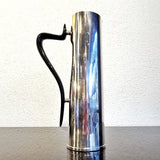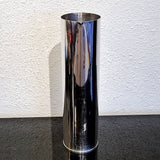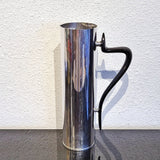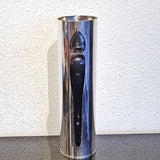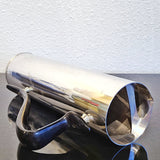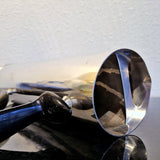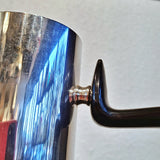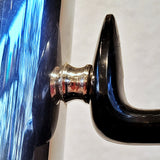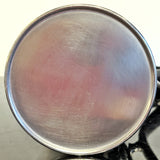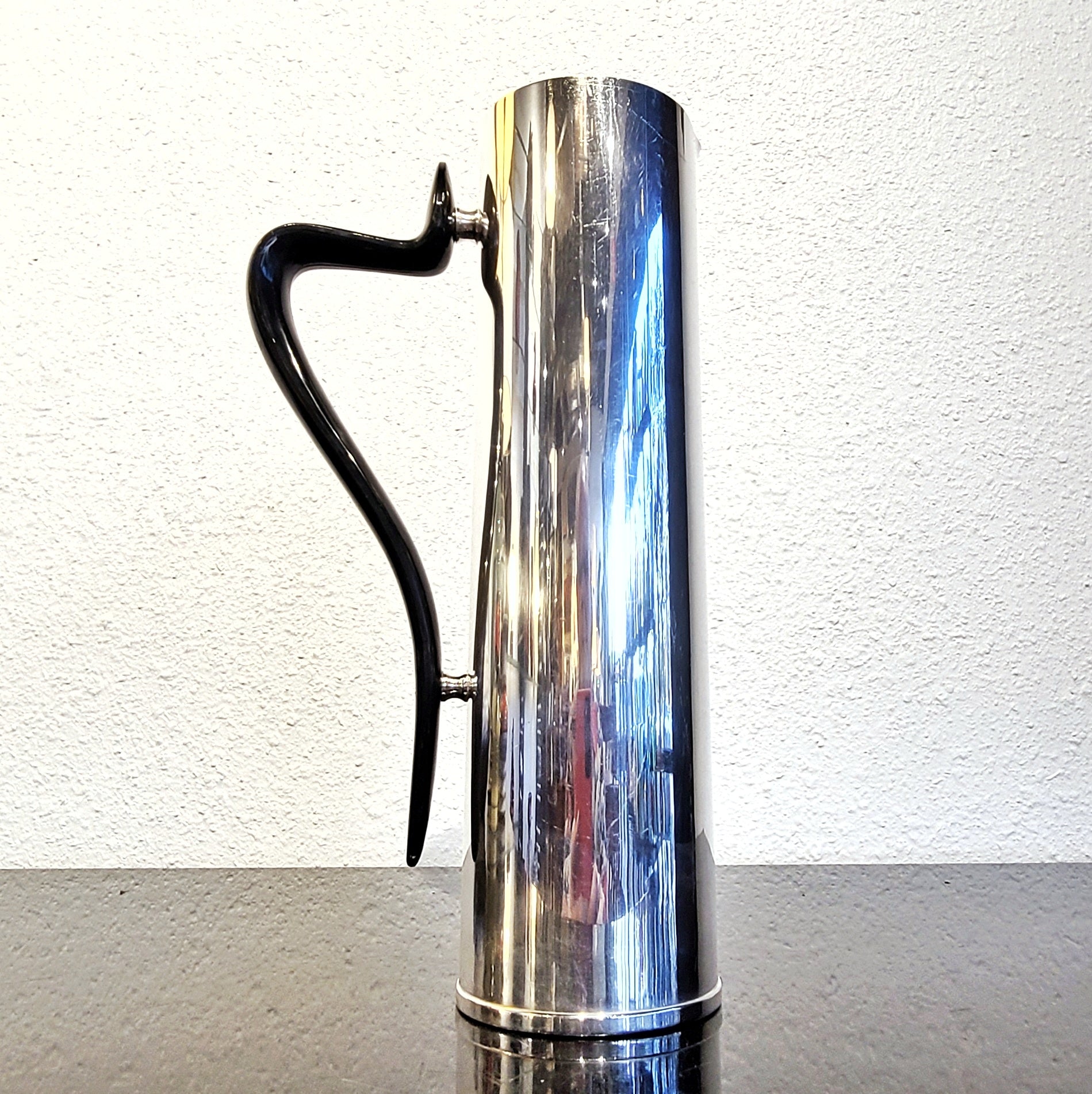
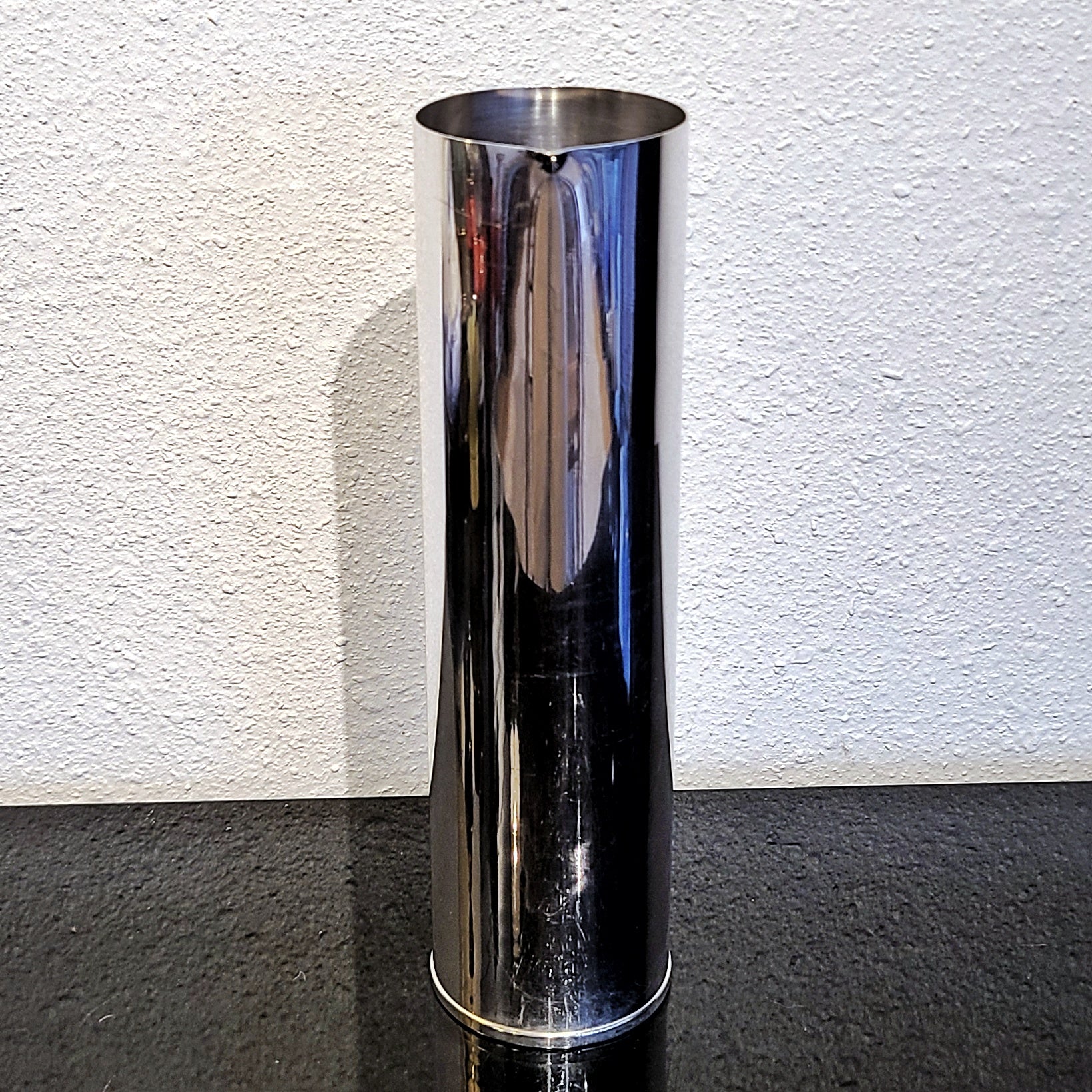
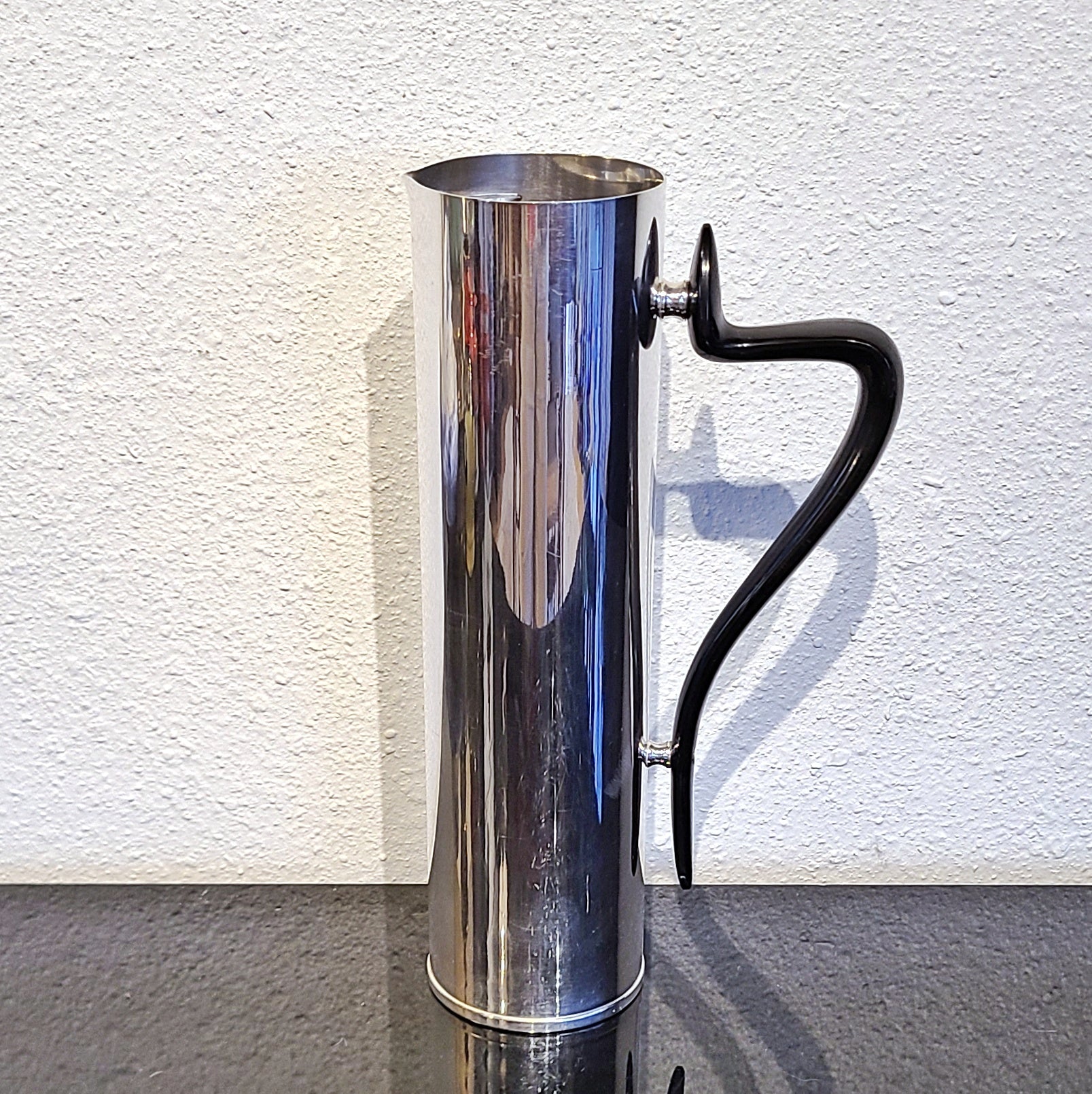
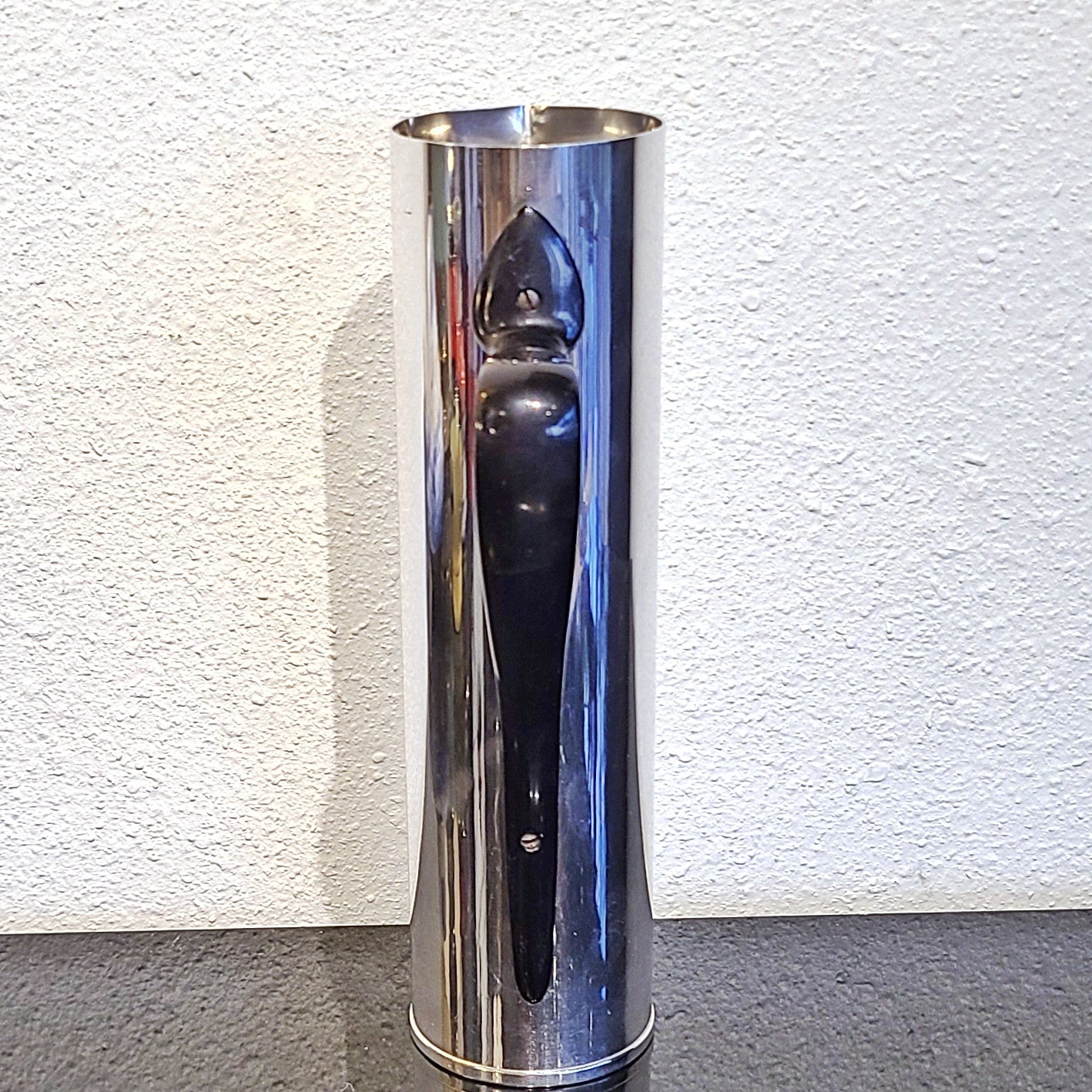
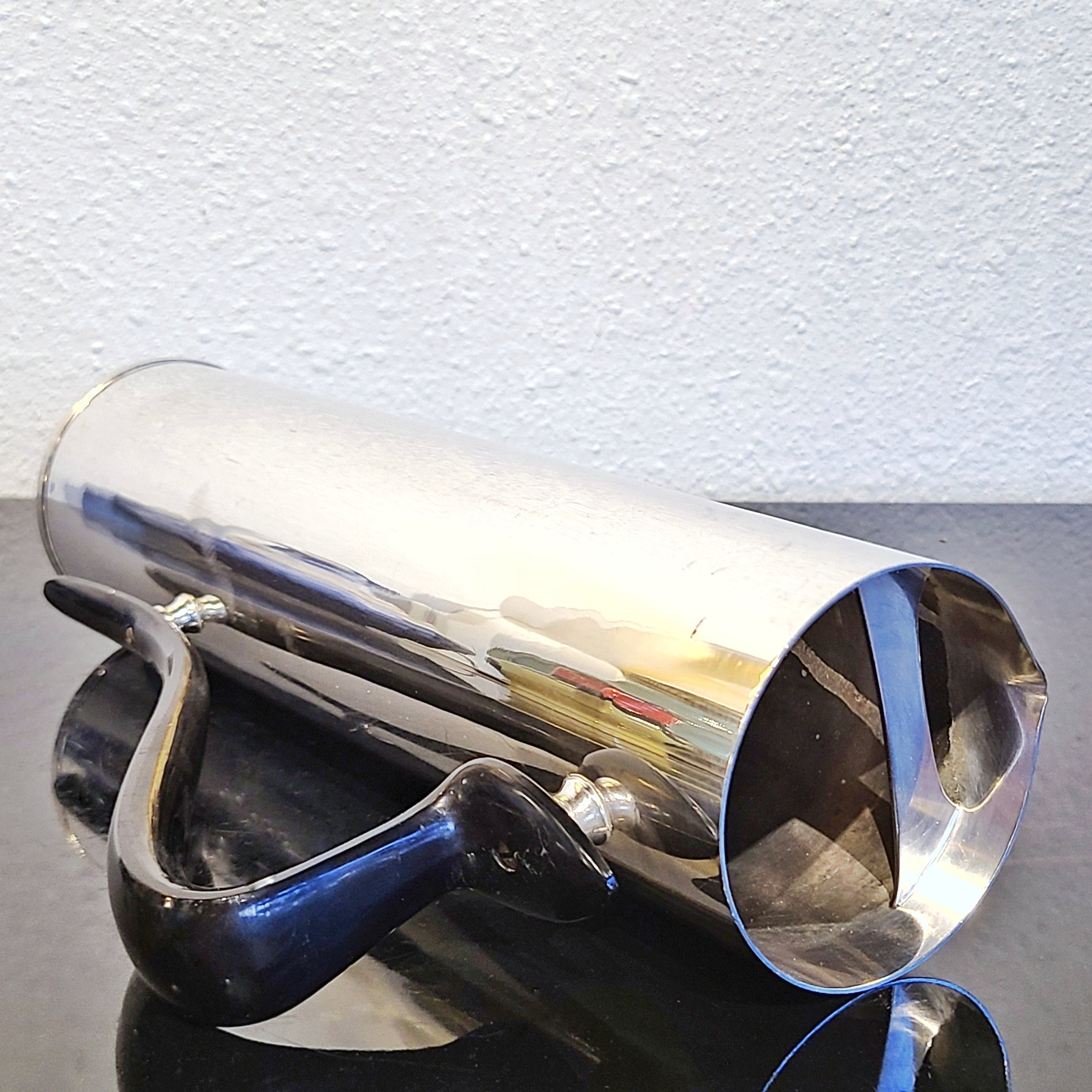
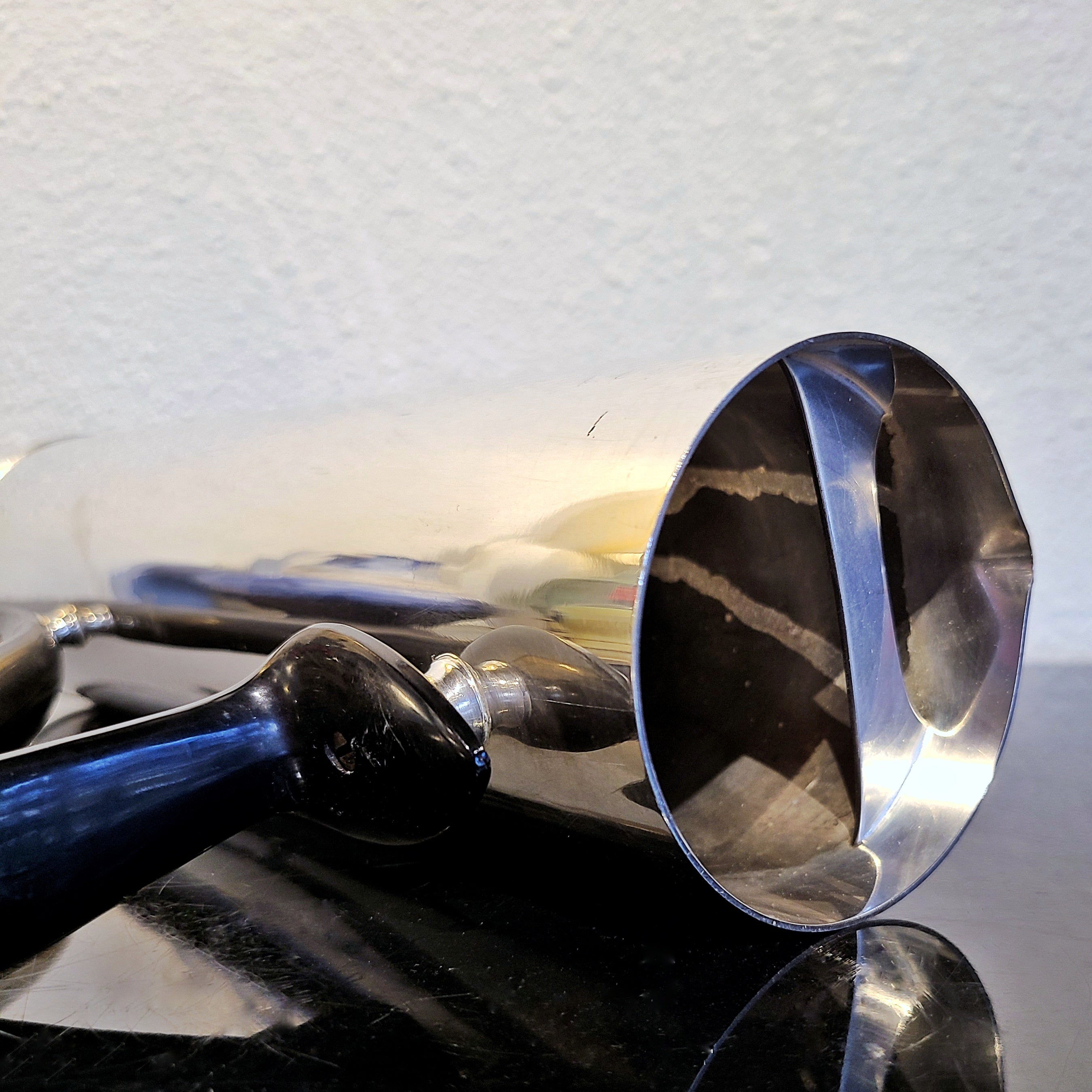
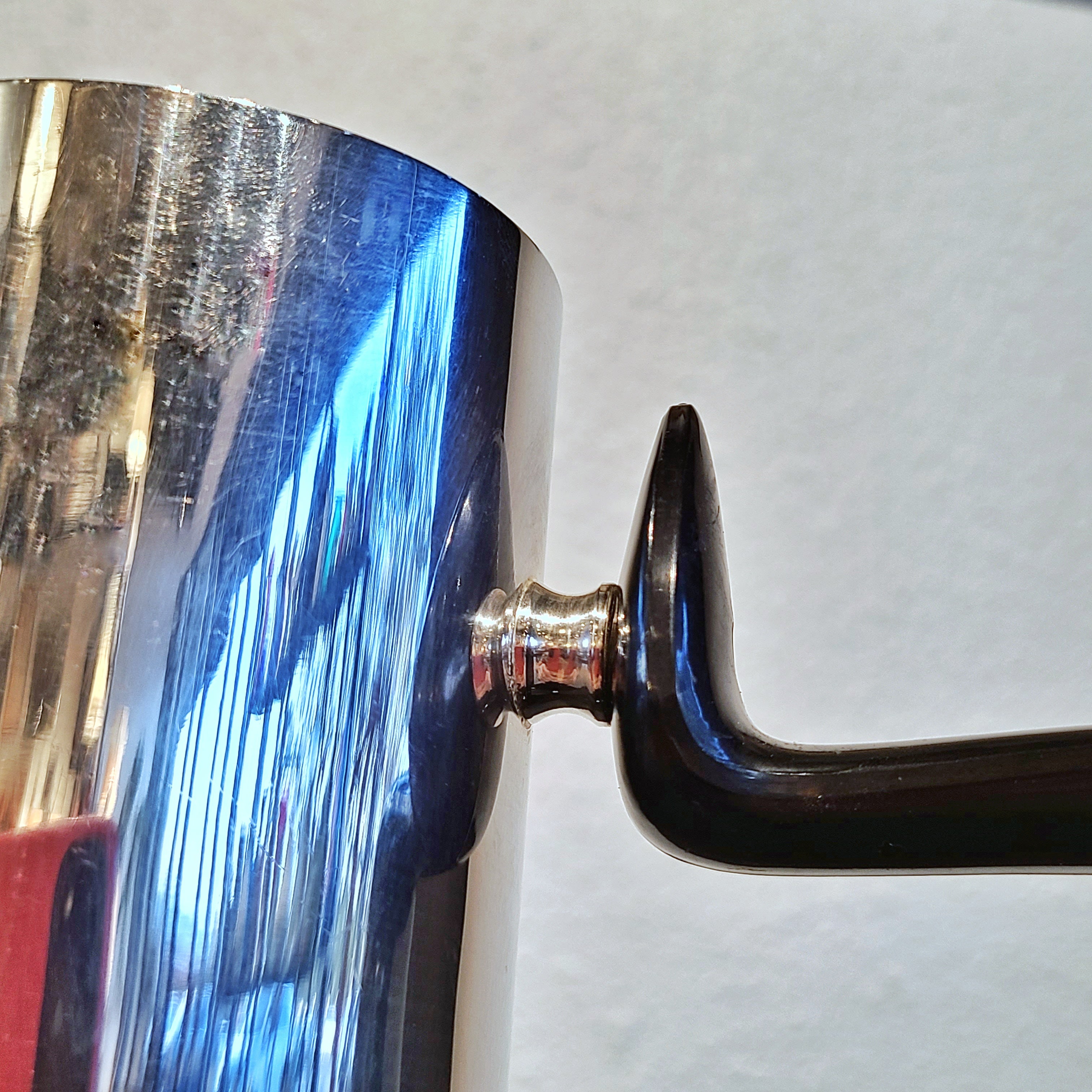
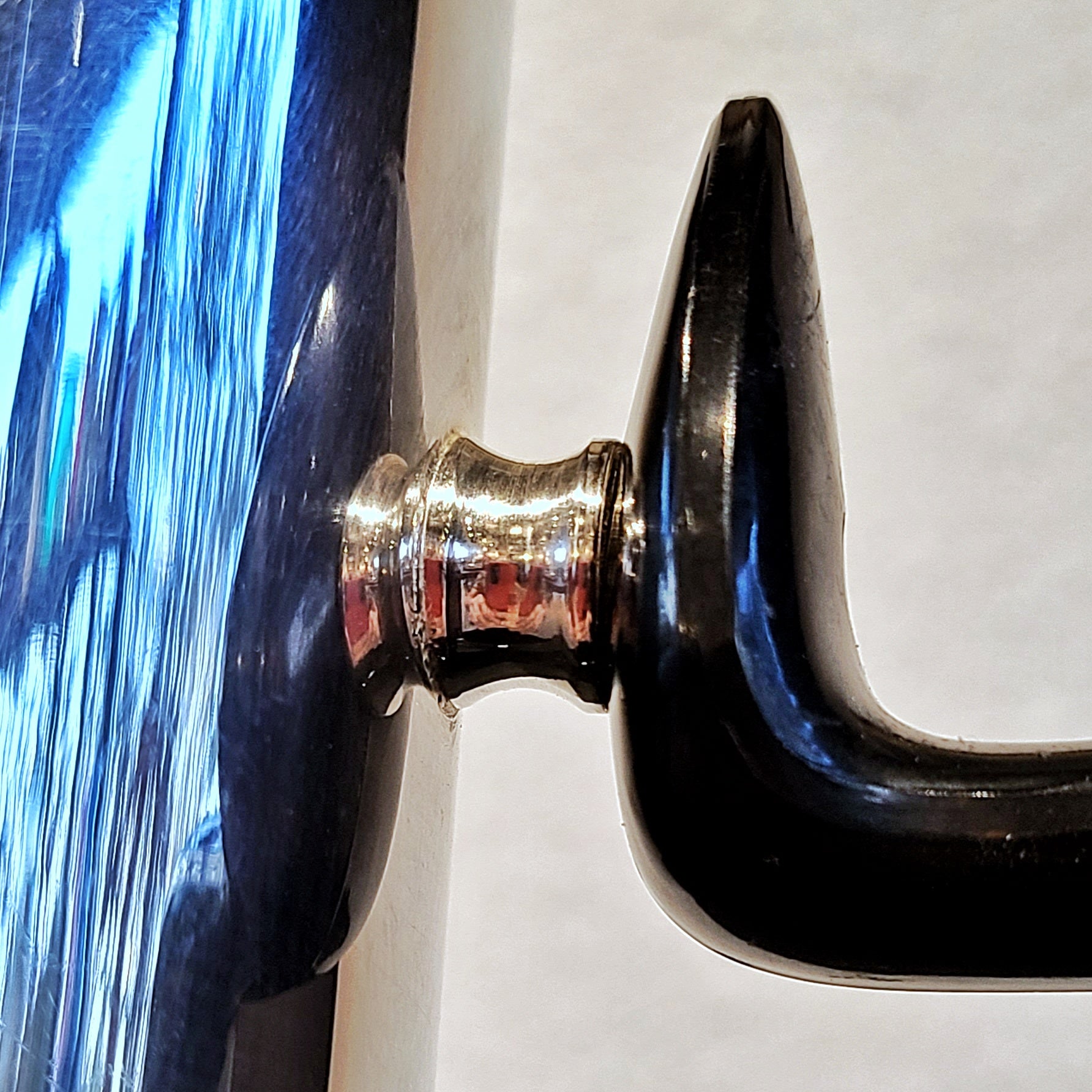
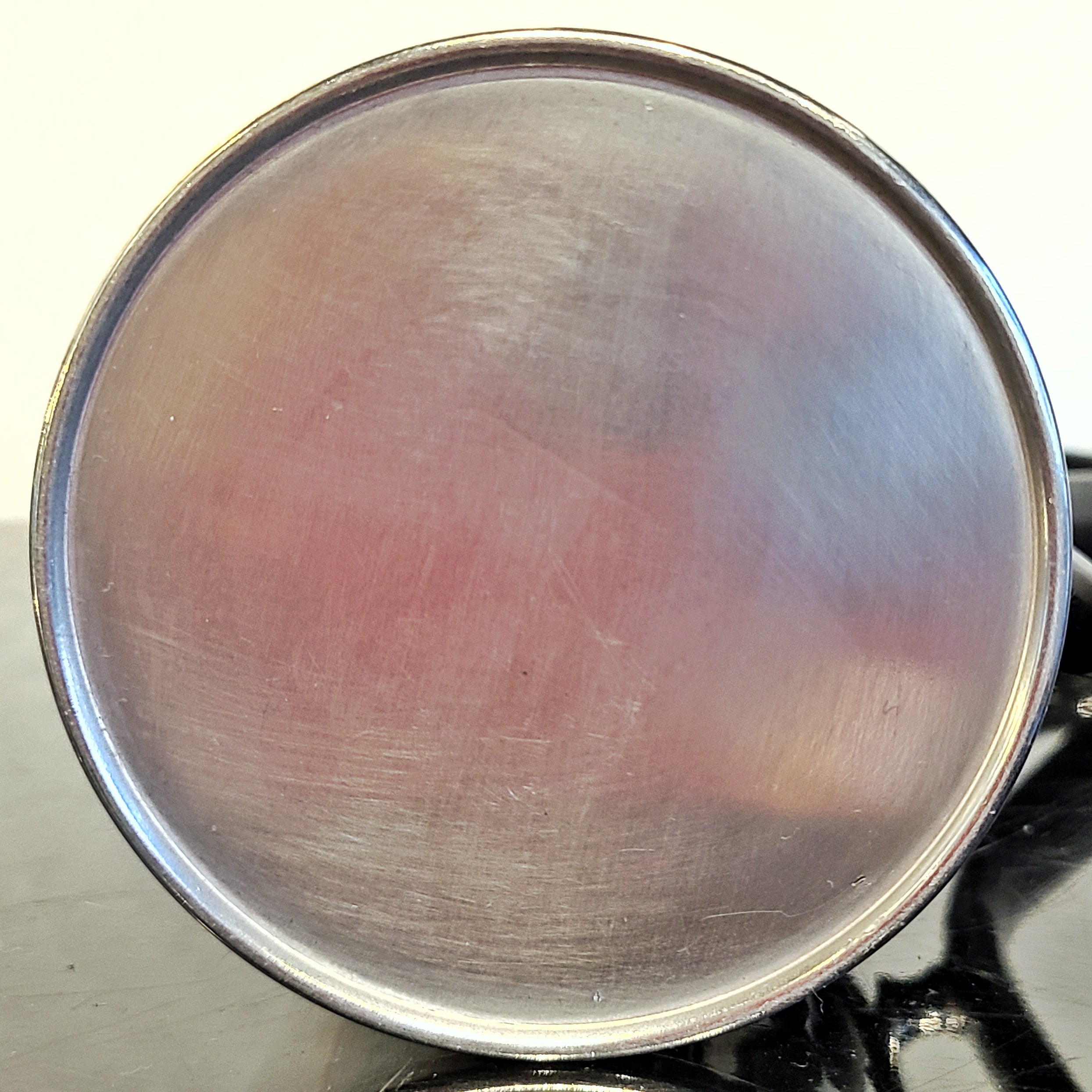
DONALD COLFLESH SILVERPLATE MARTINI PITCHER FOR GORHAM
CONTACT US HERE ABOUT THIS ITEM.
Modern "drinks" pitcher of silverplate and plastic, with a tall, cylindrical body, having a narrow band around the base and a slightly pulled triangular spout at the lip. A metal strap across the interior of the spout catches ice; the opposing handle of black plastic—in the form of a number "7," with an upturned, heart-shaped terminal at the top end—attaches to the body with short cylindrical struts. Sexy.
DONALD COLFLESH (1932–2021) was born in Cleveland Heights, Ohio, in 1932, the second of three children. He attended the Cleveland Institute of Art, before transferring to the Pratt Institute in Brooklyn, where he received a BFA in Industrial Design in the spring of 1955. That same year Colflesh was hired by the Gorham Manufacturing Company of Providence, R.I., then the country’s leading maker and retailer of fashionable silver.
Colflesh was recruited to bring a "contemporary dimension" to the firm's traditional products. His most popular and successful contribution was the Circa ’70 series—a line of table- and barware. Its very name alluded to the future and its possibilities, and its forms brilliantly captured America’s lunar ambitions, with intersecting angles that epitomized ultramodern design and curving, upright thrusts of handles and spouts that conveyed the aerodynamics of the jet age.
Circa ’70 pieces are held in several major silver collections, including those of the Art Institute of Chicago and the Dallas Museum of Art. Colflesh left Gorham in 1960 and moved to Morningside Heights in NYC to start a family. He continued to work as an industrial designer and eventually started his own freelance design business. In the '60s and '70s, Colflesh was an anti-war activist and fierce advocate for tenants’ rights. He died in 2021.
GORHAM MANUFACTURING COMPANY was founded in 1831 in Providence, Rhode Island, by master craftsmen Jabez Gorham (1792–1853) and Henry Webster (1808–1864). Along with its chief product, spoons of coin silver (silver of standard coinage purity), the firm made thimbles, combs, jewelry, and other small items. The protectionist US Tariff Act of 1842 imposed a 40 percent duty on many imported goods, including silver. The importation of foreign silverware was effectively blocked, spurring domestic production. However, GORHAM only began to fully leverage the opportunity after Jabez retired in 1847 and was succeeded by his son, John Gorham (1820–1898), as head of the firm.
GORHAM's focus was shifted to the production of larger silver sets. After a tour of European manufacturers in 1852, mechanized production methods were introduced and skilled foreign workmen were hired. The improved efficiencies that resulted meant increased productivity and lower prices, changes that eventually positioned GORHAM as one of the largest silver manufactories in the world. In 1858, the celebrated English designer George Wilkinson (1819–1894) was brought on board. GORHAM's expertise and market dominance were now such that even Tiffany & Co. outsourced all its silverware production to the firm.
The popularity of GORHAM's flatware got a boost in 1859 when it was selected by Mary Todd Lincoln for the White House. By 1863, the firm was a major player in plated silver as well. In 1868 it made the switch from coin to sterling. Also contributing to GORHAM’s growth was the introduction of holloware pieces.
GORHAM was highly influential during the heyday of American silver, roughly 1850–1940. During the 1890s, some of what would become its most beloved patterns were created. The designs, which owed much to the vision of then-director William Christmas Codman (1839–1921), were featured in the company’s upscale boutiques in major cities like New York and Philadelphia and served to further the GORHAM's acclaim. One of the firm’s most noted designers, Codman crested the Chantilly pattern in 1895, probably the firm's most famous flatware line. The company moved its New York City store in 1905 to a Fifth Avenue building it had commissioned from architect Stanford White. The next year, GORHAM purchased its long-time rival, New Jersey-based Kerr & Co. In 1924, the Massachusetts jewelry company Whiting Manufacturing Company was absorbed.
Since 1860 the firm had tried to expand into other metals besides silver, but consumers refused to pay a GORHAM premium for flatware produced in baser metals. Yet the expertise it gained in these attempts was not a total loss: its bronze foundry operations became very popular with sculptors. By 1890 GORHAM had built the world's largest bronze-casting foundry and by 1920 it employed almost 2,000 workers. The art foundry produced many sculptures for the great American sculptors of the day. More than 700 GORHAM sculptures are listed in the Smithsonian's inventory.
This inertia of success continued into the 20th century when innovative leadership under Danish designer Erik Magnussen (1884–1961) ushered in extremely popular Art Deco forms. By the midpoint of the century, though, America’s love of silver began to wane. In 1967 GORHAM was sold to Textron, a Providence-based industrial conglomerate. GORHAM ceased operating as an independent business and its new owners started reducing the quality of its products in an attempt, ultimately unsuccessful, to hold market share. The former GORHAM, now a division, was resold to Dansk International Designs in 1989, to the Brown-Foreman Corporation in 1991, and to collectible manufacturer Department 56 in 2005.
The largest collection of GORHAM objects resides today at the Rhode Island School of Design (RISD) Museum.
The legacy of the GORHAM MANUFACTURING COMPANY is not all positive. The Adelaide Avenue facility in Providence’s Reservoir Triangle neighborhood operated for nearly 100 years during a time when there were few restrictions on what materials were allowed to be used. As a result, the soil, groundwater, and the Mashapaug Pond on the site of the old facility were contaminated with toxic metals, solvents, and combustion waste products. Extensive cleanup efforts, water testing, and remediation work have started to slowly revive the site.
DETAILS
Designer – DONALD COLFLESH
Design Period/Year – 1959
Maker – GORHAM MFG. CO.
Production Period/Year – 1960s
Origin – USA
Styles/Movements – SPACE AGE; ART DECO
Materials – SILVERPLATE, PLASTIC
Colors – SILVER, BLACK
Condition – Excellent vintage condition. Minor traces of wear consistent with age and use.
Dimensions – 6" W × 3" D × 11" H

